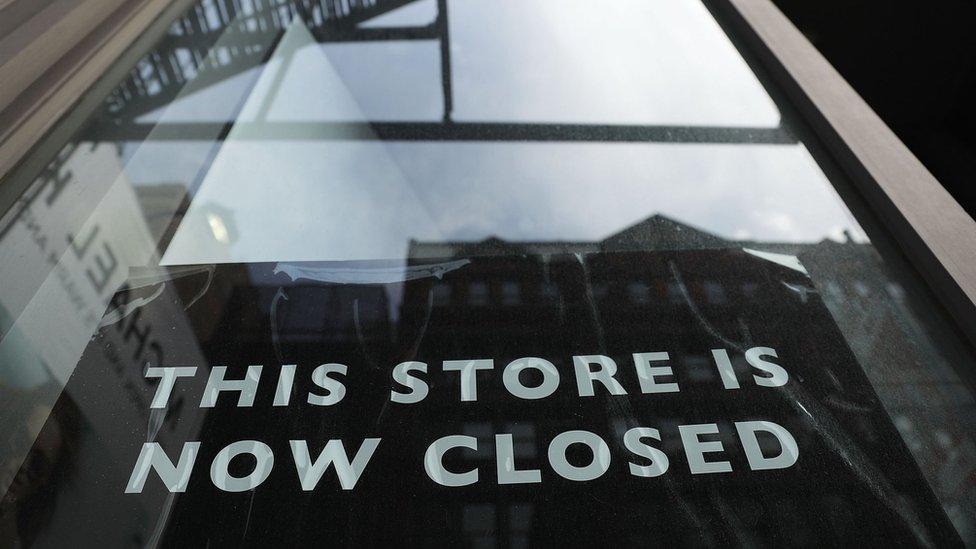US retail sales rise as stores struggle
- Published

Employment at US department stores has fallen by more than 30,000 in the last year
US retail sales rose by 4.5% in April compared with the same month last year, but department store chains continue to struggle.
JC Penney said like-for-like sales fell by 3.5% in its first quarter, against the same period last year.
Earlier this week rival retailers, including Macy's and Nordstrom, also reported declining sales.
Meanwhile the US Commerce Department reported that online shopping boomed in April, climbing 11.9% year-on-year.
"That's the growth area and that's the whole growth area," said Howard Davidowitz, chair of Davidowitz & Associates, a retail consulting firm based in New York.
Sales at non-store retailers represented 10.8% of total US food and retail sales in April, the Commerce Department said on Friday. Annual growth in the sector has topped 10% for 12 consecutive months.
But sales at US department stores in April fell 3.7% year-on-year, marking a two-year run of annual declines, the Commerce Department said.
Sales at sporting goods, hobby, music and book stores dropped 2.4%.
Sliding sales stoke fears for US department stores
Biggest fall in UK retail sales in seven years
JC Penney, which has more than 1,000 branches across the US, reported net sales of $2.7bn in the three months to the end of April - a fall of 3.7%.
Like-for-like sales, which strip out stores open for less than a year, declined by 3.5% in the quarter.
Business picked up in April, but February weighed on the quarterly figures, chief executive Marvin R. Ellison said.
The company posted a net loss of $180m, more than double last year, in part due to the costs related to plans for more than 100 store closures.
"Obviously we had a very challenging quarter in a challenging environment," said chief financial officer Ed Record.
'Gigantic adjustment'
Mr Davidowitz said consumer spending isn't strong enough to overcome the headwinds traditional retailers, like Penney, face.
The US middle class, once the primary customer for chains like Penney, Macy's and Kohl's, has shrunk, while online shopping competition adds to pressure to keep prices down.
The price of clothing, for example, increased by just 0.5% between April 2016 and April 2017, the Bureau of Labor Statistics said on Friday.
That compared to overall an inflation rate of 2.2%, and a 1.9% rate, excluding energy and food.
Mr Davidowitz said US retailers are also grappling with a physical footprint that is much larger than in many other countries.
That cost drags on results, even for firms that are doing significant online business, he said.
"There's going to be a gigantic adjustment, which is going to take place over a long period," he said.